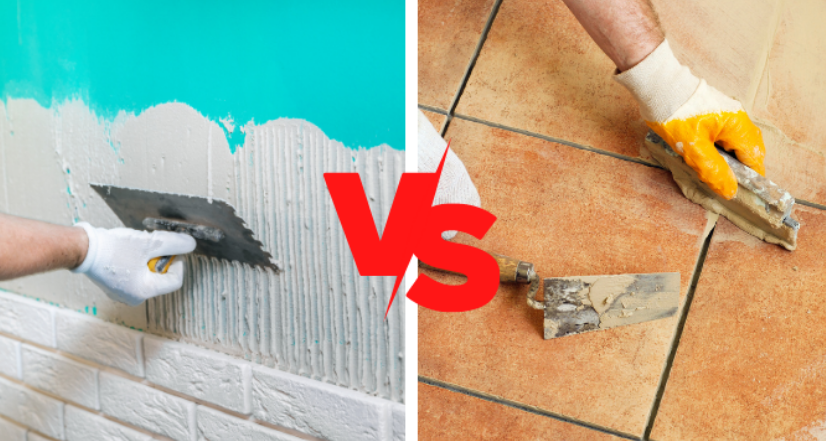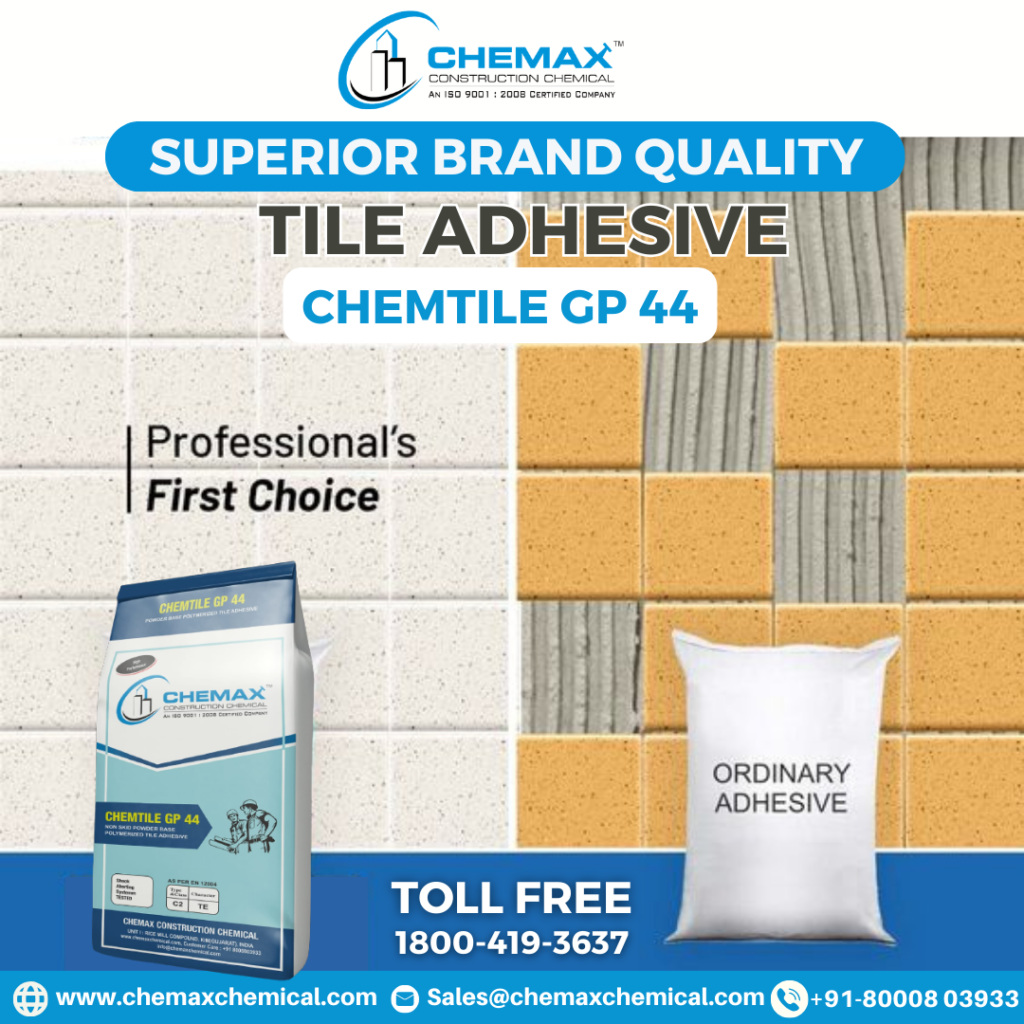It’s not common to build the house of your dreams—for some, it may even take a lifetime to achieve one. Therefore, it’s crucial to make the right choice when gathering the materials for the construction of your dream home. This blog helps you understand the distinctions between grout and tile adhesive so you can decide which material to use and when.
Each of these materials is significant in its own right, so it’s critical to use both during construction to ensure that the house is both aesthetically pleasing and built with quality in mind. Though they might appear similar and cause confusion, both of the materials are significant on an individual basis. The following is the way in which the two differ from one another.
The distinctions between grout and tile adhesive

The primary distinction between grout and tile adhesive lies in the purposes of the two substances. Within the same encounter, there are two separate movements. Tile adhesive is the material that is used to affix tiles to a wall, floor, or other surface. Conversely, grout is the mortar that fills in the spaces between tiles to give them a uniform look and seals the surface. To better understand how the two mixtures differ from one another, we must examine them.
Tile adhesive: what is it?
Whether for walls or floors, the time-consuming, poorly adhering tiles have long been installed using sand, cement, and water. Combinations of sand and cement are waste materials, labor-intensive, have limited applications, and debonding issues. The use of tile adhesive to hold the tiles firmly and permanently in place overcomes all of the drawbacks of the sand-cement combination.
It is easy to find both a pre-mixed tile adhesive that is sold in stores and a ready-to-use combination that simply requires water.

The advantages of tile adhesive
- User-friendly Applying the tile adhesive is quite simple.
Once combined with water, it can be used right away. The product is packed to make shipping easier and to create a dust-free, immaculate working environment. The tiles don’t need to be wet.
- Excellent work
With its quick setting time and stronghold, the tile adhesive plays a crucial role in mitigating problems such as efflorescence, water seepage, cracked tiles, and stains. As a result, utilizing tile adhesive improves productivity because repairs don’t need to be made repeatedly.
- Cost-effective
Since the adhesive layer is substantially thinner than the sand-cement mixture used for tile glue, there is less stress on the building structure. This reduces the amount of debt on your lists while simultaneously making it more efficiently done in a quality manner.
Grout: What is it?
Cement, sand, and water are carefully combined to create grout, a composite material. Usually grey or white, it really comes in an almost infinite variety of colours. In kitchens and bathrooms, those exquisite (and typically pricey) ceramic tiles must remain in place. Whether grout is used between ceramic, quarry, or natural stone tiles, it is essential to keep moisture from leaking into the floor or wall below.
Grout benefits:
- Beautiful appearance
The gap is visible whether or not there is space between the tiles when they are laid. Grouting helps to give your floor tiles a polished look by filling in the cracks.
- Financial
If you don’t grout your bedroom’s tiles, they will continue to shift. No matter how carefully you arrange the tiles, the displacement will remain. If the tiles continue to rub against one another and pressure builds up as a result, your tiles may chip or crack. Grout is the best at preventing this and spares you from having to pay for repeated repairs.
- Put an end to the growth of mold.
Grout is a porous substance that can retain moisture, dirt, and bacteria. Water seeping into the grout can lead to the growth of mold and mildew. If you allow this growth to continue, you may need to undergo a time-consuming and inconvenient repair procedure.
What happens if grout is not used?
Admit it: you always want to finish your tiling project as soon as you begin. Grout only adds to the time and expense of your task, and its appearance may not be to everyone’s taste. Cleaning grout can be challenging. It follows that the question, “Can you tile without grout?” is raised. In order to help solve this issue, we conducted the investigation. The short response is no. Make every effort not to tile without grout. To keep your tile and the wall behind it safe, grout is required. There is a way to minimize grout lines if you don’t like how they look.
Conclusion
Having a thorough understanding of both materials makes deciding where to apply grout and tile adhesive easy. However, using both materials is necessary, and people cannot afford to forgo using any one of them to build a house that is suitable in quality. Although there isn’t much of a difference, they are both crucial to building the ideal home. It is advisable to add both of these components at the very first turn because neglecting one of them could lead to ongoing renovations in the house that are not financially feasible.
World-Class Adhesive Manufacturing Solutions in India. Chemax is a leading and reputable supplier of adhesive solutions in India, providing a wide variety of adhesives for a wide range of applications in different industries. We can create tile adhesives, stone adhesives, and adhesives for multipurpose applications thanks to our top-notch R&D facilities and cutting-edge infrastructure.




